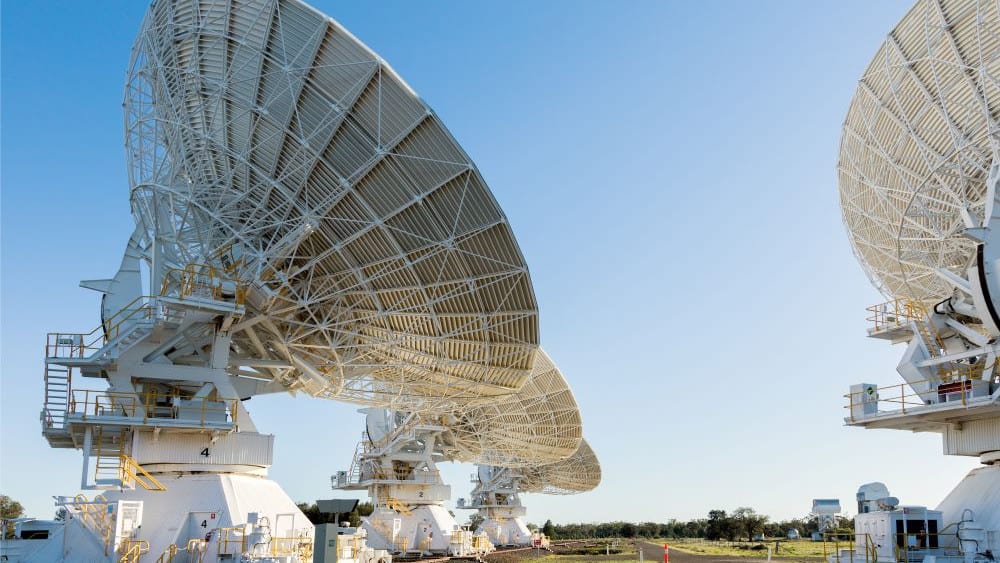- Investors looking for rare earths outside China
- Niche, knowledgeable investors take interest
- M&A “could well follow”
Australian rare earths players are increasingly becoming investment targets amid the global scramble for rare earth metals as Western countries seek to diversify their supply chains from China, while M&A activity has yet to follow, according to sector sources polled by this news service.
Potential investors are likely to be resources-focussed private equity (PE) or investment vehicles like those owned by Australian resources billionaires Gina Rinehart and Andrew Forrest, sources told Mergermarket.
“There are resources-focussed PE funds which you could expect might be interested – the likes of Appian Capital Advisory, Resource Capital Funds, Denham Capital, Sprott, among others,” said Matt Ireland, Partner at Perth-based law firm Steinepreis Paganin.
Appian Capital Advisory already has a stake in Gippsland Critical Minerals in Victoria, Australia, which it bought into in February 2021, as announced. The project, previously named Kalbar Operations, is expected to be one of the world’s major rare earths producers, according to its website.
Andrew Mortimer, Chairman at Sydney-based corporate advisory firm Keops Group pointed out that Hancock Prospecting and Tattarang, private vehicles backed by Rinehart and Forrest respectively, may compete to invest in rare earths.
Wyloo Metals, under Tattarang, invested AUD 150m (USD 100.6m) in the form of secured, exchangeable notes into Hastings Technology Metals Ltd [ASX:HAS] in August 2022, while in December 2022, Arafura Rare Earths [ASX:ARU] announced that Hancock Prospecting committed to invest AUD 60m that would result in a post-completion interest of around 10%.
Australian rare earths projects may not have reached the scale that would interest major international players and hence M&A activity may not happen in the short term, Ireland said. However, if any projects with sufficient scale begin to progress, major players may get involved and the M&A activity may follow, he said.
And now with the US indicating its willingness to fund some rare earths projects to speed up their growth, Ireland said that Australian players now would have a “more reasonable shot” than they did before.
Esperance roll-up in focus
Mortimer pointed to the Esperance region in Western Australia as an underexplored region for rare earths, where economies of scale means that the regions is expected to undergo a consolidation of rare earths players.
“The Esperance region is looking Tier 1, it’s world-class,” he said. “Similar to the gold companies in the Goldfields region where economies of scale mean you would need some kind of central facility, the Esperance is a whole new province for rare earths, and there’s definitely going to be a roll-up there.”
In the Esperance region, Mount Ridley Mines [ASX:TKTK] will release a resource estimate (JORC) in the next few months, which will gain attention from nearby miners, he said. Mount Ridley is within around 100km from the AUD 29.7m market-cap REE miner OD6 Metals [ASX:OD6] and Dundas Rare Earths [ASX:DUN], which are all near the port of Esperance.
“It’s hard to tell at this stage who will build a plant, because they would need significant technical experience and capabilities,” Mortimer said.
The Esperance region also has a problem with the type of rare earths it holds, according to Cian Caffrey, Executive Director at RFC Ambrian, an Australian advisory firm focusing on natural resources. Clay-style rare earths there could be of different kinds and make-up, which means processing could be more difficult or even unviable, he said.
A global scramble
Australia’s rare earths players are getting noticed amid the shifting global geopolitics as North American and European markets look to establish independence from China, sources say. According to an August 2022 MarshMcLennan report, China currently controls 60% of global mined rare earths production, 85% of the global rare earths processing capacity and more than 90% of rare earths permanent magnets manufactured.
However, the global scramble to secure feedstocks for future-facing technologies has its headwinds. The West is “way behind” China in the intellectual property (IP) and community acceptance of processing rare earths, said Caffrey.
“A significant amount of effort is being put into exploration and development of REE deposits in the USA, Europe and Australia, but almost all of the required processing capacity and IP for rare earths is in China, thereby making most Western projects essentially undevelopable at the current time,” Caffrey told Mergermarket.
There are still some reasonably pressing financial and ESG concerns around the processing of some REEs, so “it won’t be easy, cheap or quick”, he said.
Australia’s Lynas Rare Earths [ASX:LYC], the second-largest producer of separated rare earths in the world, was recently notified by the Malaysian government that it could no longer perform cracking and leaching at its Malaysian plant because of associated environmental impacts.
Rare earths developers in Australia and elsewhere may choose to wait for sufficient non-China processing capacity before they reach final investment decision (FID) or will have to have enough investor understanding as to why they may need to, Caffrey noted.
Meanwhile, Chinese investment in Australian rare earths projects will face increasing scrutiny as Australia is planning more assertive reviews of foreign investment in industries such as rare earths and lithium, a newswire reported last November, citing Treasurer Jim Chalmers. Chinese company Shenghe Resources Holding has a 19.9% stake in Perth-based Peak Rare Earths [ASX:PEK], a developer of rare earths projects in the UK and Africa.
In Canada, the government in November 2022 ordered the divestment of three critical minerals companies from Chinese investors.
Can we do it?
While geopolitical uncertainties play out and the demand for rare earths intensifies, Australia is building on its own processing capabilities, even with the government handing out much-needed assistance, according to Caffrey, who pointed to Iluka Resources [ASX:ILU] receiving an AUD 1.25bn federal government loan last year for its Eneabba plant, which will be the first rare earths separation facility in Australia.
“It’s doubtful Iluka could have funded it in the absence of that loan,” he said.
With the Eneabba plant at its front-end engineering design (FEED) stage and Lynas also building plants in Kalgoorlie and Texas, US, producers may have to time their developments accordingly, Caffrey said.
Other Australian rare earths players include Ionic Rare Earths [ASX:IXR], which is progressing several discussions to find a strategic partner for a rare earths separation and refining plant in the US, and the AUD 213.4m-market cap Northern Minerals [ASX:NTU], which 100% owns the Browns Range rare earths project in Western Australia and in October 2022 announced a partnership with Iluka Resources for rare earth concentrate supply.
Currently large global mining majors may not see a worthwhile risk-reward trade-off due to the complexities of owning and operating large rare earths mining and production facilities, hence large M&A deals are more likely be initiated by established rare earths players like Lynas, or large chemical conglomerates like Australian conglomerate Wesfarmers’ [ASX:WES], which previously attempted to acquire Lynas in 2019, Caffrey said.
South Korean and Japanese trading houses and specialised manufacturing companies may also be interested, Caffrey said. In July 2021, a South Korean consortium acquired a 20% equity interest in Australian Strategic Materials’ [ASX:ASM] Dubbo project, which contains rare earths, under a USD 250m conditional framework agreement.
An M&A and private equity lawyer specializing in mining also said that most PE investors are not likely to take risks on a cyclical mining industry and market downturns, while niche and strategic investors are likely to invest in rare earths before and after a pre-feasibility study (PFS) is completed.
by James Arbuthnott in Sydney








